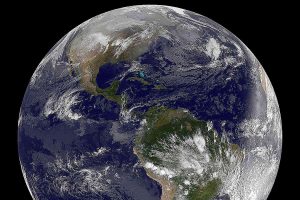Earth, is the third planet in the Solar System and is considered the home of humankind. Here are some facts about Earth:
Size and Shape: The planet has a diameter of approximately 12,742 kilometers and has a geodetic shape.
Layers: Earth is composed of four main layers. The innermost layer is the solid, dense inner core made up of iron-nickel alloys. The outer core is composed of liquid iron-nickel alloys. The mantle is a hot, solid layer composed of iron, magnesium, silicon, and other elements. The outermost layer is a thin crust made up of granite, basalt, and other rocks.

Temperature: Earth’s average temperature is around 15°C. However, the temperature can vary greatly depending on the location on Earth, altitude, and other factors. Temperatures in the polar regions typically range from -40°C to -70°C, while temperatures in tropical regions are generally around 30°C.
Earth’s gravity field is approximately 9.8 m/s². This means that any object falling towards Planet will accelerate at a rate of 9.8 meters per second squared. Earth’s gravity is caused by its large mass and keeps our planet in orbit around the Sun.
Life: The planet is known as the home of humankind and is the only known habitat for life in the universe. Earth’s climate, atmosphere, and other features provide the necessary conditions for humans to survive. However, suitable conditions for all forms of life on Planet are not guaranteed, and there are various environmental factors, such as natural disasters and climate change, that can impact life on our planet.
In conclusion, The planet is a unique and complex planet that is home to a diverse array of life. Its features, such as its atmosphere, temperature, and gravity, make it a suitable habitat for human beings and other living organisms. However, it is important to continue to protect and preserve our planet’s environment to ensure its sustainability for future generations.



















Add Comment